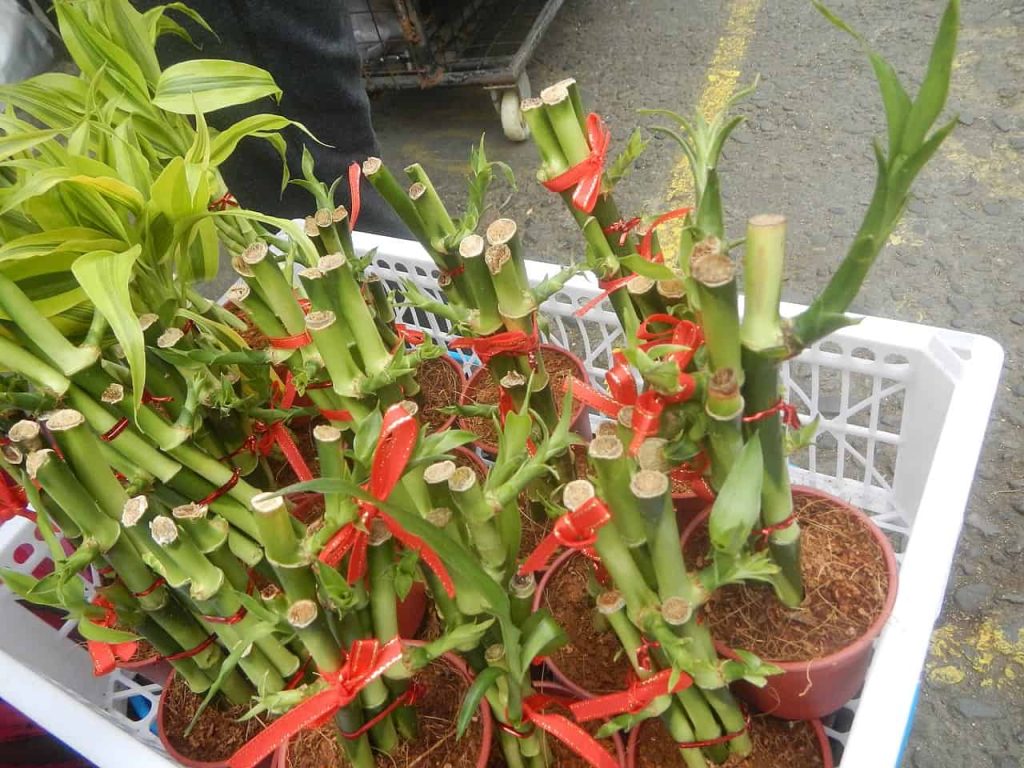We know how plants mean different things to different people. In various cultures all around the world, you often see people attach various importance and significance to a plant. The lucky bamboo plant is a common indoor plant that is loved for many reasons, although this plant isn’t bamboo, however, the stalks and the stems do have a similar look like the bamboo.
The lucky bamboo is popularly used for Feng shui- which is an ancient Chinese art of arranging buildings, objects in space, to achieve harmony and balance. The lucky bamboo is characterized and loved for its special shapes, swirls, and braided stalks. We think it is impossible to not love the lucky bamboo. In many traditions, the lucky bamboo, together with its stalks and swirls mean different things, at different stages of its growth. Interesting right?
Although this is one of the best to grow in the home because of how easy it is to care for, we understand that there may be a bit of trouble with some aspects of growing and propagating the lucky bamboo.
We are also aware that a lot of people are looking to grow the lucky bamboo in their space, for whatever reason you choose to grow the lucky bamboo, you should know that this good luck charm needs specific growing conditions to thrive well, and to its maximum potential.
Lucky for you, we have provided everything you need to know to grow and care for your lucky bamboo.
Lucky Bamboo Plant Explained
| Common name | Lucky bamboo, friendship bamboo |
| Botanical name | Dracaena sanderiana |
| Plant type | Perennial shrub |
| Soil type | Moist but well-drained, Water |
| Soil pH | Acidic |
| Humidity | Average |
| Family | Asparagaceae |
| Temperature | 65 to 90 degrees F |
| Native | Africa |
| Toxicity | Toxic. |
The lucky bamboo, also known by its botanical name Dracaena sanderiana, from the Asparagaceae family originates from Africa, however, over time; there has been an importation of the plant into china.
The lucky bamboo plant is known by various other names i.e., friendship bamboo, goddess of mercy plant, ribbon plant, etc. The plant is specially grown for its traditional importance. If properly cared for, can grow to 39 inches high, with its leaves growing to 9 inches long.
Lucky Bamboo Plant Varieties
The types of the lucky bamboo plant give you the option of having more than one type of this lovely plant in your home, or growing other varieties than you are used to. The following are the types of lucky bamboo that are near you and that we think will be worth your space.
1. Green Lucky Bamboo
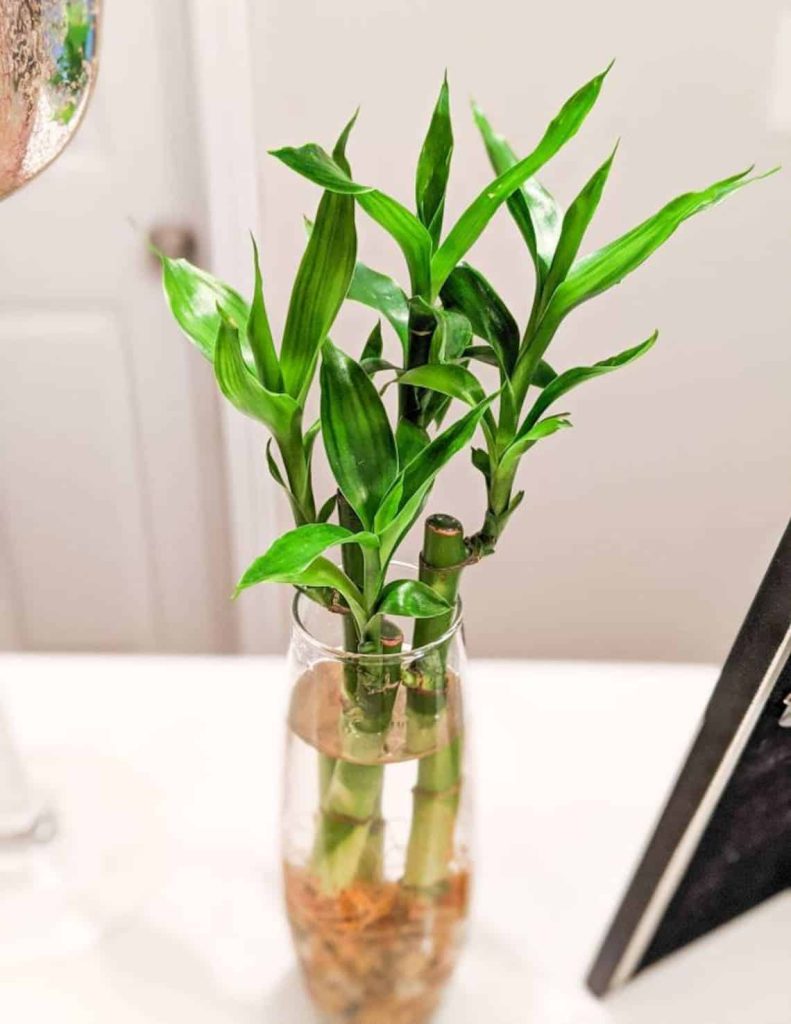
This is the most popular type of lucky bamboo plant, you will find. This variety is popularly known and used for feng shui. It is known for its multiple stalks and popularly goes by many other names asides from the lucky bamboo plant. The green lucky bamboo is quite easy to grow and is most times best for glass jar growth.
2. White Stripe Victory
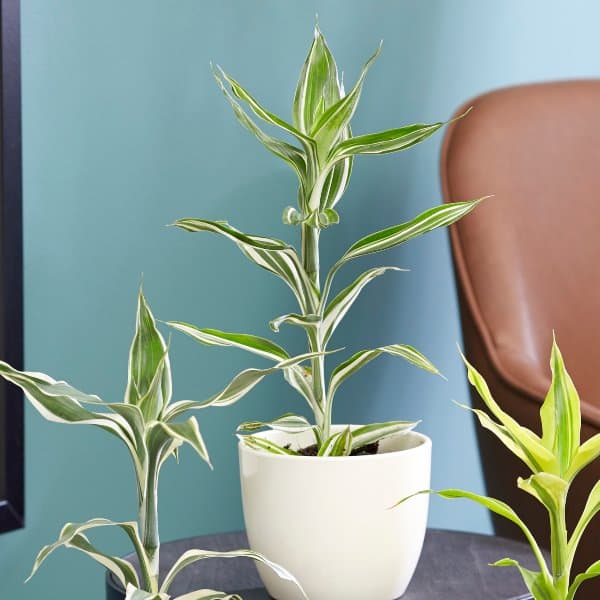
Also known as the Dracaena sanderiana “Victory”, the white stripe victory variety of the lucky bamboo plant is known for its lovely light green leaves, characterized by white stripes. The white stripe variety is easy to grow and will grow best in shaded locations without so much supervision.
3. Lotus Lucky Bamboo
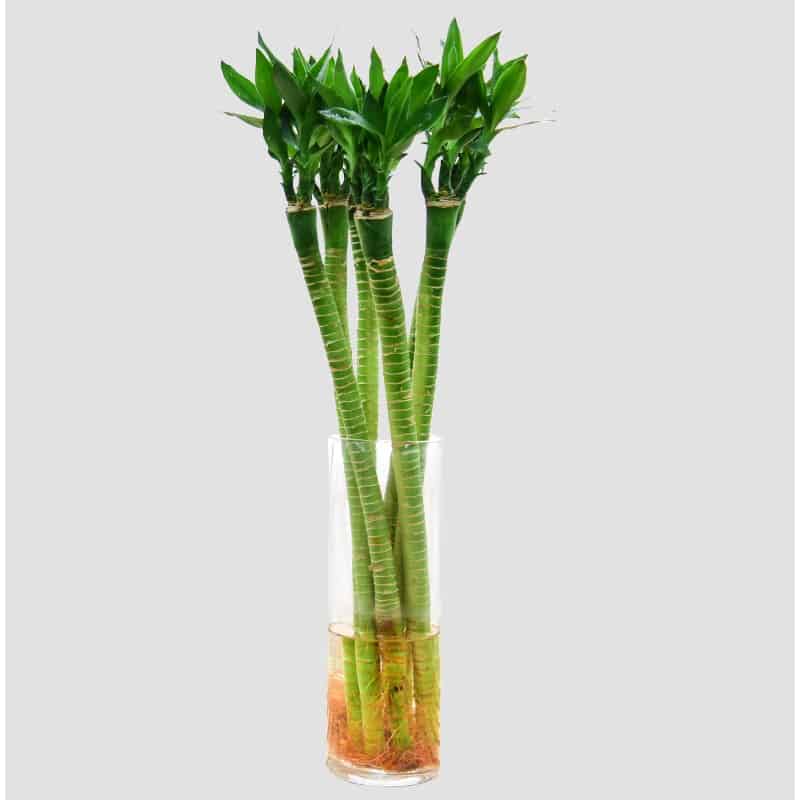
This variety is characterized by the production of only a single stalk. This means that the lotus lucky bamboo produces only one stalk and brings leaves at the end of the stalk. The single stalk of the lotus lucky bamboo represents purity in Feng Shui.
4. White Stripe Gold

The white stripe gold is similar to the white stripe victory in appearance. However, the only difference that exists between these two plants is that the white stripe gold comes with a yellow border. The plant can be grown in both water and soil.
5. 3 Layer Lucky Bamboo
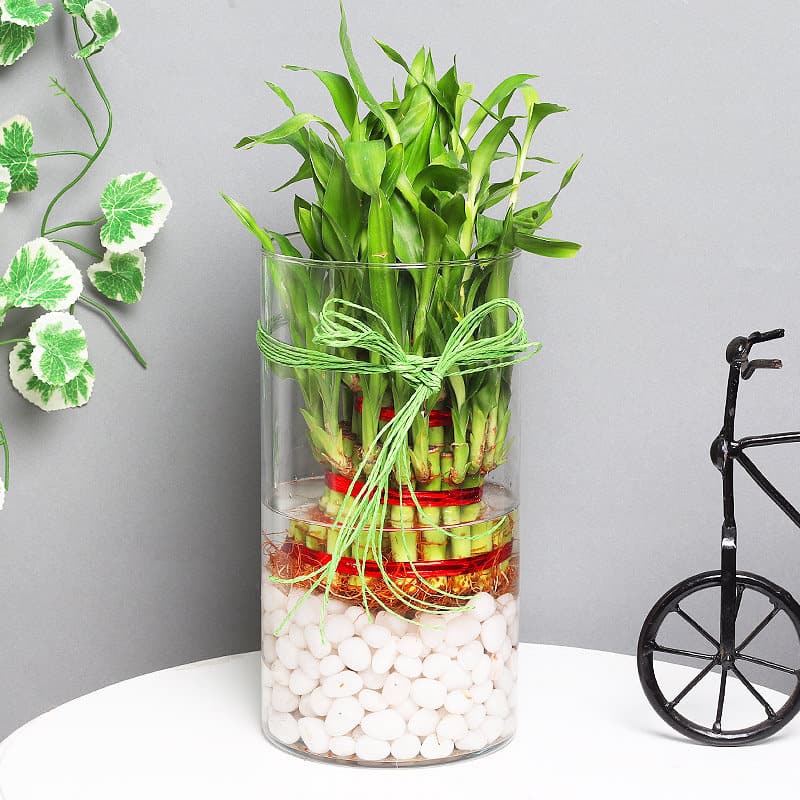
Also known as dracaena braunii, this plant is known by traditional users as a bearer of luck to whoever owns it. It is popularly known for its low maintenance nature, which means that this plant can be easily grown and care for. The 3 layers of lucky bamboo are perfect for a glass bowl.
Lucky Bamboo Plant Propagation
Propagation allows you to make more young and new plants. It allows you to gift, sell or keep more young versions of your plant.
The good thing about propagating the lucky bamboo plant is that it can be propagated any time, regardless of the season. The plant is suitable for either dormant or growing seasons. This means that you can grow your plant all year round! Below are steps on how to properly propagate your lucky bamboo plant.
- Identify and select a healthy lucky bamboo plant. Carefully remove from the container and separate the roots from the dirt. Ensure that the roots are still attached to the stalks.
- Select a healthy stalk, preferably, one that has a new offshoot growing on it. Make sure the stalk has two nodes, with an offshoot that is 4 to 6 inches tall.
- Cut off the offshoot from its attachment to its parent stalk. Remove the lower leaves from the shoot.
- Place all your cuttings in containers of water and watch your plant develop its root. In 30 days or less, the lucky bamboo plant will have its rooting system.
Lucky Bamboo Plant Care Guide
Here’s how to care for your Lucky bamboo plant.
1. Light
Lighting for the lucky bamboo plant is very important. The lucky bamboo plant will not tolerate being placed in direct sunlight, as this will burn it and cause its death. Depending on the variety you are growing, we will not advise that you do not place this good luck charm in the shade, or dark place. The ideal light requirement for your plant is bright, indirect light. We recommend that you rotate your plant so that it can receive light on all sides.
2. Water
The lucky bamboo is easy in other aspects, however, watering can be a bit tasking. The first thing to note is that the lucky bamboo will not tolerate tap water, due to the chlorine content in it. Usage of tap water can cause brown leaf tips and death to your plant.
Your plant will prefer distilled, filtered, or bottled water. You can also leave the tap water to sit overnight, before using it for your plant. The lucky bamboo plant enjoys being moist, this means that the plant has to be watered to keep the plant moist. Water as often as possible; however, ensure the plant is not waterlogged.
3. Soil
Lucky bamboo plants can be grown in quality, well-drained soil, which can be purchased at the local nursery center close to you. Moisture is very important to the plant’s growth, hence, this means that the plant has to be kept wet, however, although the plant enjoys being kept moist, it will not tolerate being water-logged.
The lucky bamboo can also be grown and raised in water; this of course is with stones or peddles in the jar or pot of water. Change the water, as often as possible and ensure the pot or jar is thoroughly washed if algae are found in it.
4. Temperature
The lucky bamboo will thrive well in a temperature range of 65 degrees and 90 degrees F. Ensure your plant is nowhere near a hot or cold draft; it should also not be placed close to a heating vent, air conditioner, or a drafty window.
5. Humidity
Luckily, the lucky bamboo can stay at an average humidity level. The regular humidity level in your home will do just fine, for your plant; you do not have to seek extra means to increase humidity for your plant.
6. Fertilizer
You can feed your lucky bamboo plant with fertilizer every month; however ensure you are using the weakest form of liquid fertilizer as the regular can be a little too much. We recommend that you purchase fertilizers specially made for lucky bamboo plants.
Lucky Bamboo Plant FAQs
Is Lucky Bamboo Easy To Care For?
The lucky bamboo is very easy to care for; however, this is dependent on the quality of care guide that you provide for it. i.e., water, light, humidity, temperature, fertilizer, etc. If all is provided at the right quality, you are going to have a good time growing your lucky plant.
How Long Can Lucky Bamboo Live?
Lucky bamboo as a houseplant will live for several years it is almost impossible to kill this good luck charm. However, the lifespan of your plant is also dependent on how you care for it. Your lucky bamboo can live for 20 to 30 years if properly cared for.
How Fast Does Lucky Bamboo Grow?
The lucky bamboo plant will grow moderately fast. With the right care, the plant will grow to about 19 inches in six months or less. Indoor, the plant can get to 5 feet.
Is The Lucky Bamboo Toxic?
Yes! The major parts (shoots and leaves) of the lucky bamboo are very toxic and should not be ingested by animals or humans. Ensure the plant is kept out of the reach of your pets and kids.
What Do I Do When My Lucky Bamboo Has Brown Spots?
Brown spots on your lucky bamboo leaves can be caused by a wide range of things i.e., the chlorine content in the water, exposure to direct sunlight, high fertilizer, etc. We recommend that you observe your plant thoroughly to determine the cause of the problem.
Can I Buy The Lucky Bamboo Plant On My Own, Or Should I Be Gifted?
It is believed that the lucky bamboo plant brings good luck whether you purchase it or it is gifted. It is totally fine, to purchase your lucky bamboo.
Why Is My Lucky Bamboo Yellow?
Overwatering is the number one cause of yellowing on your lucky bamboo plant. However, this can also be a result of low light, fewer nutrients, poor soil, and low humidity. Observe your care routine, determine the problem and adjust appropriately.
Final Thoughts
It is amazing to know that this plant can be woven into different styles and still grow as it should. We recommend that you read the various signs of the number of stalks before purchasing your plant. However, the following tips will help your plant stay healthy in addition to the above care conditions.
- Although the lucky bamboo is easy to grow, it can be affected by some diseases and infections. Such as powdery mildew, edema, sooty mold, etc.
- Powdery mildew appears on the leaves as a powdery white coat, after a while of being affected, the plant turns yellow and dies. This can be treated with fungicidal sprays and pruning of the affected parts.
- Sooty mold is usually caused by an infestation of insects such as mealy bugs, aphids, etc. It is often spotted as black spots on the leaves and stalks. We recommend that you apply insecticidal soap or oil to the affected spots.
- Pruning is very important to the growth of lucky bamboo. Prune the plant to keep it in shape and under control. Trim off dead or damaged parts of the plant so it doesn’t affect other parts, or look unkempt.
- Algae are something you might have to deal with if you are growing your plant in water. This is as a result of the clear jar which allows light to penetrate the water and encourage the growth of algae. If this is found, discard the water and wash the jar thoroughly, and resume again.
- The healthy lucky bamboo plant is usually red or orange. If your plant has this color, there is no cause for alarm.
The lucky bamboo plant has many benefits and significance according to the Chinese tradition. If you do choose this plant for your home, we believe you’ll more than like it.
Featured image: Judgefloro / Wikimedia Commons.

